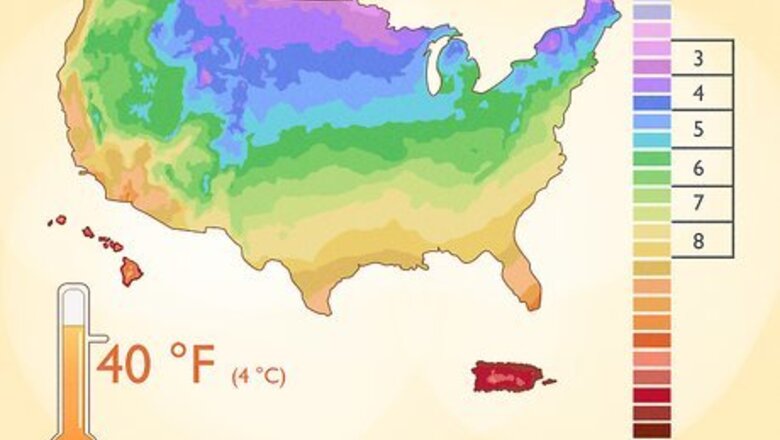
views
Planting Rhubarb
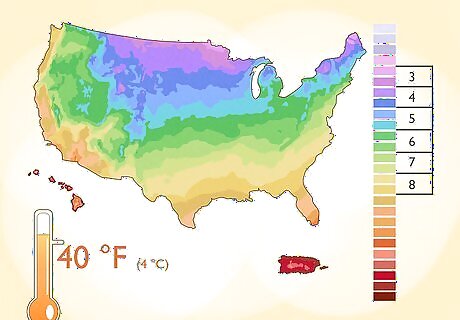
Determine whether you're in the right growing zone. Rhubarb is a cool-season plant that requires temperatures that drop below 40 °F (4 °C) in order to stimulate growth. The northern states in the US as well as Canada are good places to grow rhubarb. Check your growing zone to find out if you can grow rhubarb in the climate where you live. Rhubarb grows best in USDA hardiness zones 3-8. This includes much of the northern parts of the Midwest as well as the northeastern regions of the US. Rhubarb wilts during the heat of hot southern summers. If you live in a southern region where it regularly goes above 75 °F (24 °C), it will probably be difficult to grow this plant.
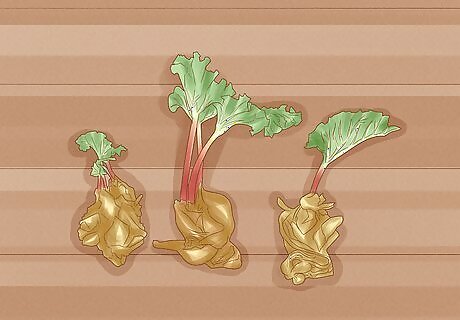
Get rhubarb crowns to plant in the spring. Rhubarb is best grown from roots (crowns), not seed, since the seeds take a long time to get established and there's no guarantee they'll ever germinate. Go to your local nursery and buy rhubarb roots or purchase some from an online source. If you have a friend with a rhubarb plant, you may be able to dig up a crown from the side of their plant to get yours started.
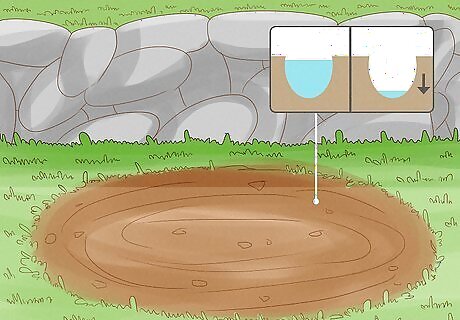
Choose a planting site. Rhubarb should be planted in an area in full sun. Look for a spot that drains well, since rhubarb won't do as well if water sits around its base. To determine whether soil drains well, dig a hole and fill it with water. If the water sits in the hole, the soil there doesn't drain well. If it immediately soaks into the ground, the soil is great for planting rhubarb. You may want to stick a ruler in the hole so that you can measure how quickly it drains. Ideally the water should drain out at a rate of 1-3 inches per hour. If it drains too fast, your plant will dry out; too slow and the roots may rot.
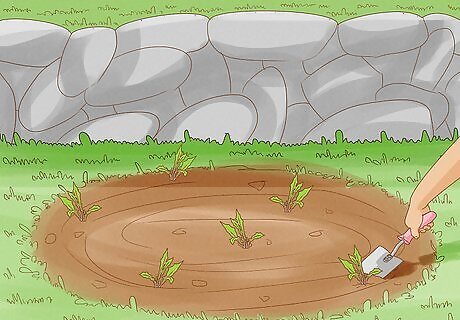
Prepare the soil for planting. Clear out weeds and other plants that may interfere with the rhubarb plants. Till your gardening bed to a depth of several feet and mix in plenty of compost, rotted manure or other organic matter to enrich the soil. This step is essential, since rhubarb needs plenty of nutrients to grow well. You can also consider building a raised bed to plant your rhubarb and other vegetables. This way you can control the soil drainage and weed population more easily. Don't treat the area with herbicides or pesticides; rhubarb should only be planted in clean soil. Don't use chemical fertilizer to treat the soil during the first year of growth; only organic material should be used until the second or third year.
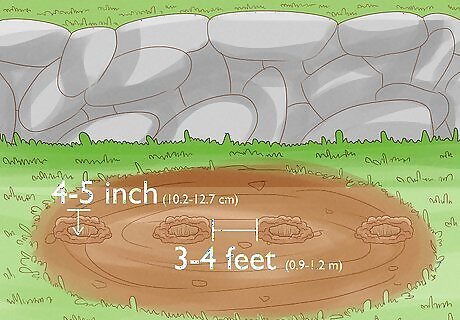
Dig 4–5 inch (10.2–12.7 cm) holes 3–4 feet (0.9–1.2 m) apart. Rhubarb plants can grow to become quite large, so it's important to give them plenty of space. Dig the holes in rows.
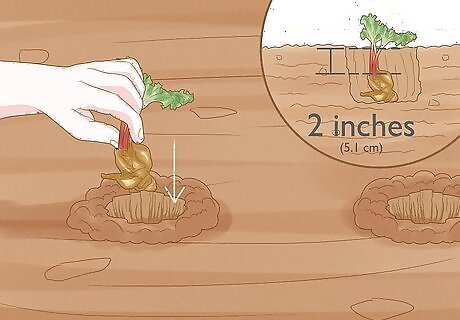
Plant the roots 2 inches (5.1 cm) below the surface of the ground. Place the roots in the holes and gently fill them in with compost-rich soil. Water the roots after planting.
Caring for Rhubarb
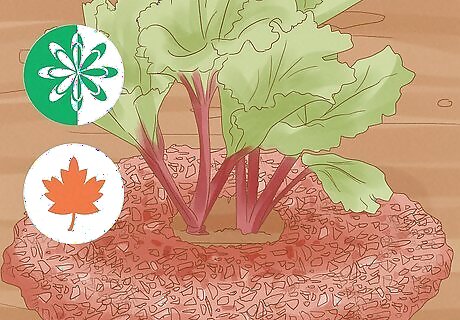
Place a layer of mulch over your rhubarb bed in the spring and fall. Use hay and cow manure to keep weeds from growing and continue to nourish the rhubarb plants. Leaf mulch or ramial wood chips also make good mulches.
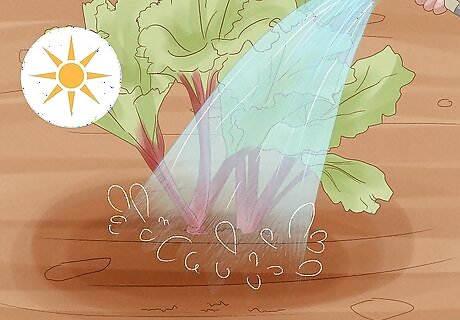
Keep the rhubarb watered during the summer. Your rhubarb bed should stay moist and well-drained throughout the heat of the summer. Water every time the soil begins to look dry.
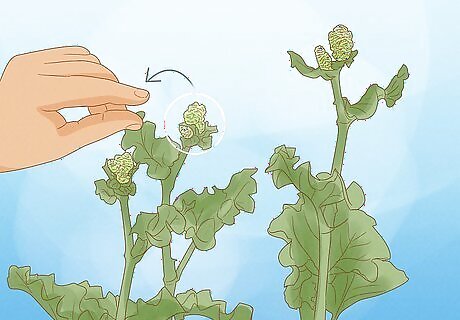
Remove seed stalks before they get too big. Seed stalks keep the rest of the rhubarb plant from growing tall and strong, since they use up the plant's energy.
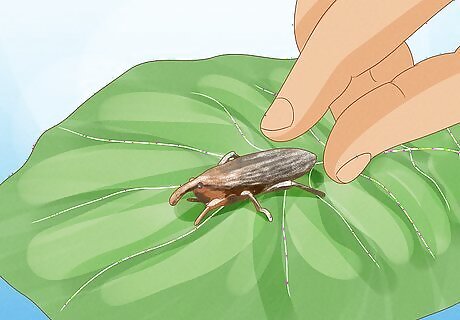
Pick off rhubarb curculio. Rhubarb isn't prone to getting many pests, but you may notice a beetle called the rhubarb curculio on the stalks. This beetle is light gray and about half an inch long. Pick off the beetles one at a time. Don't use pesticide to kill them, as this may damage your rhubarb plants.
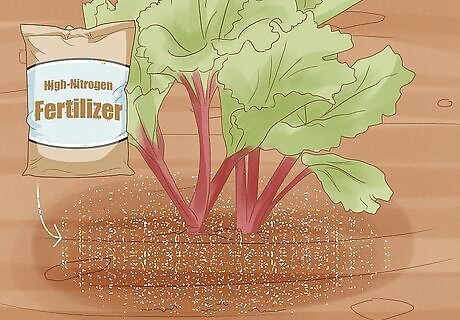
Fertilize rhubarb every spring. After the first year has passed, use a light application of high-nitrogen fertilizer to encourage the rhubarb to come back healthy. Do this after the ground has started to thaw.
Harvesting and Using Rhubarb
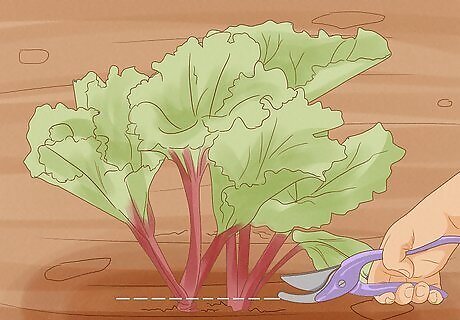
Wait until the second year. Rhubarb needs a year to get fully established, so you'll need to wait until the second year before harvesting any stalks.
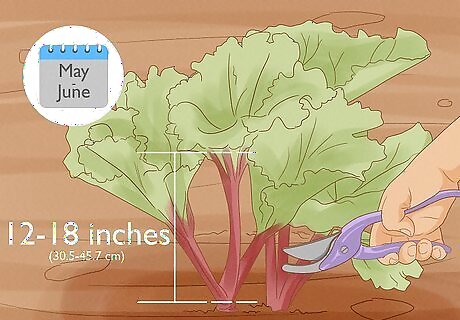
Harvest stalks when they are mature. They should be 12 to 18 inches (30.5 to 45.7 cm) long. Continue harvesting throughout the summer - the season should last 8 to 10 weeks. Harvest rhubarb in late May or June by cutting the stems off with a sharp knife at soil level. It is best to harvest several times, removing a few stems from each plant each time. Harvesting the crop slowly allows the remaining stems to draw on the energy of the plant. Always leave at least two stalks per plant so that it can store up energy for next year. This will ensure that you have a harvest next year. Harvesting season is over when the stalks start growing up thin. Some rhubarb plants will keep coming back for up to 20 years once established.
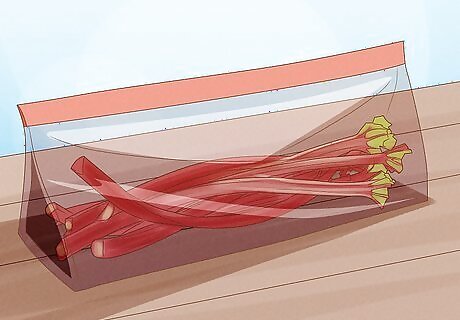
Store rhubarb in the refrigerator. If you aren't going to use it immediately, store it in an airtight food storage bag in the refrigerator. It will keep this way for up to a week. You may also cut the rhubarb stalks into chunks and freeze them in a freezer-safe container for several months.
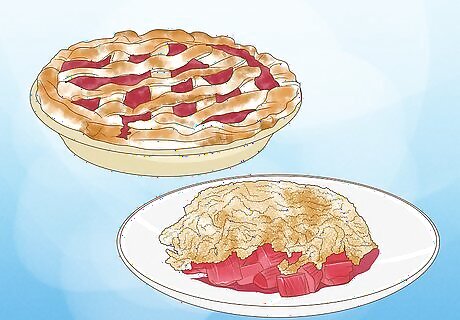
Use rhubarb in a recipe. Cherry red rhubarb stalks are usually cooked in dessert dishes, since they lend a tangy, bright flavor to pies and tarts. Enjoy your garden-grown rhubarb in one of these recipes: Rhubarb pie. This classic rhubarb dish won't disappoint. The rhubarb is cooked with sugar and strawberries for a delicious filling. Rhubarb crumble. This is another rhubarb dessert that's quicker to make than pie, but no less satisfying. Rhubarb cream. The flavor of rhubarb is mixed with honey and cream to make a delightful topping for any dessert. Rhubarb ice cream. Nothing could be more delicious than ice cream made with fresh garden produce.














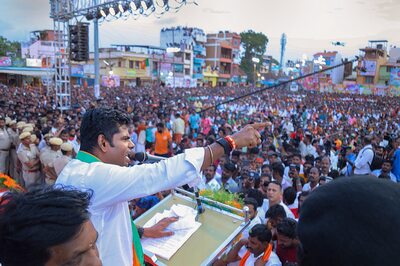




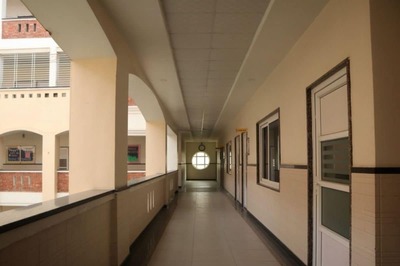
Comments
0 comment